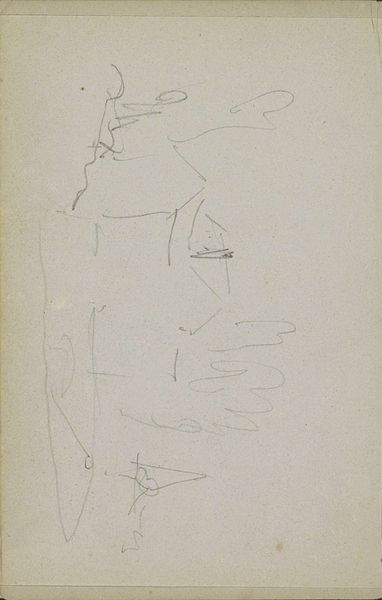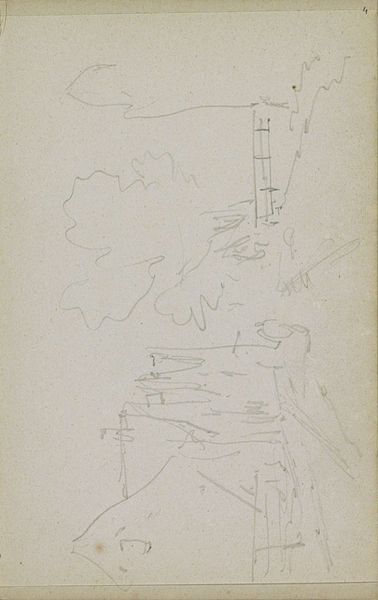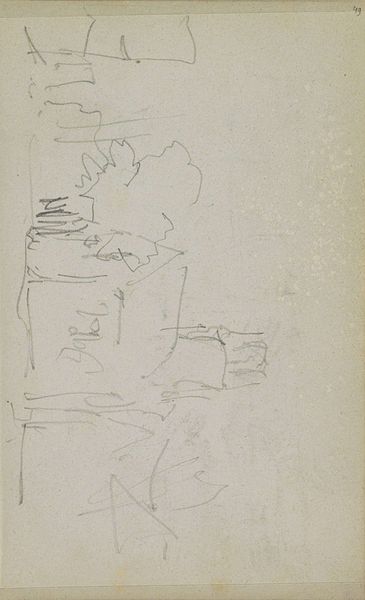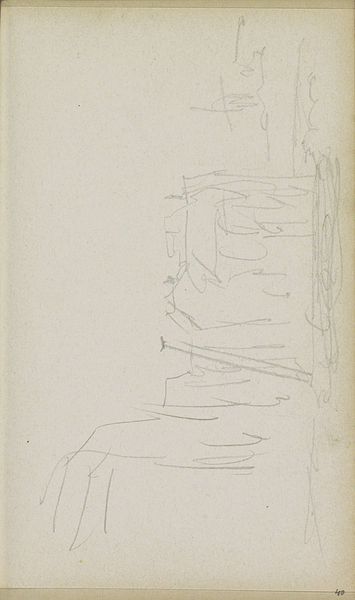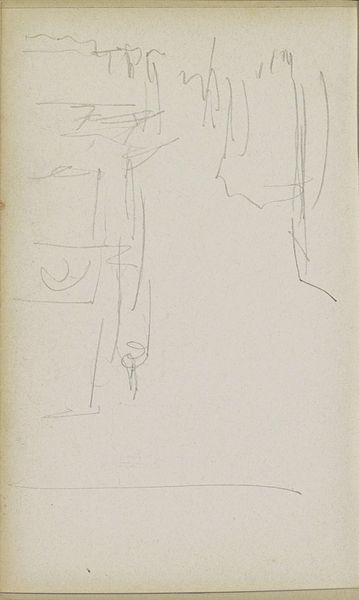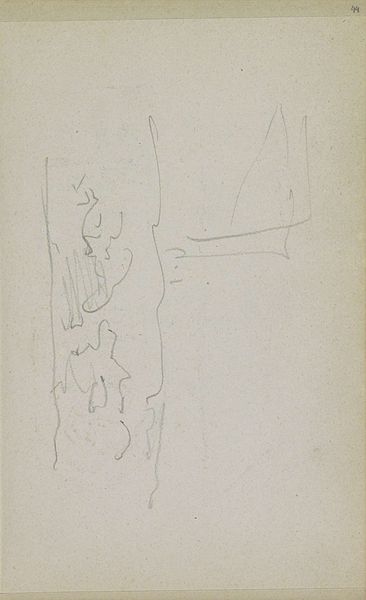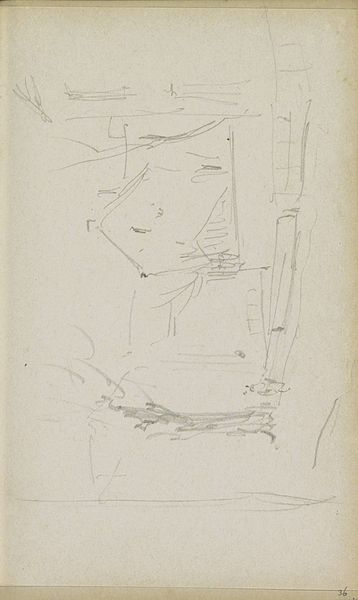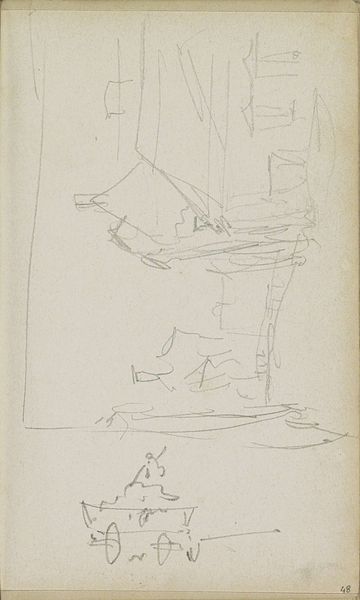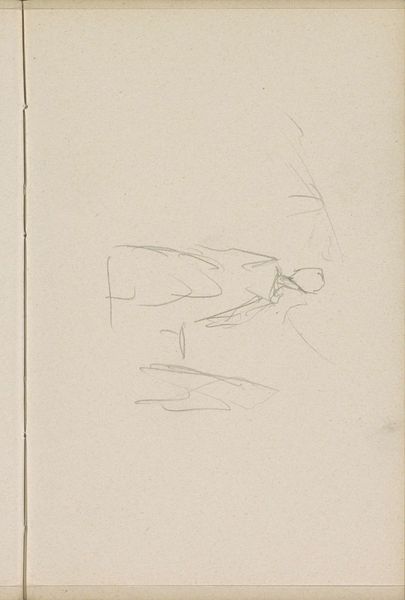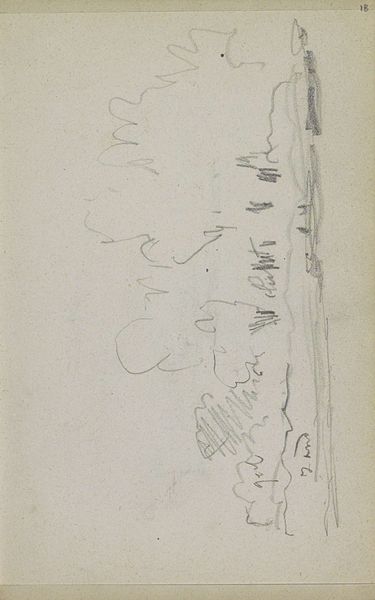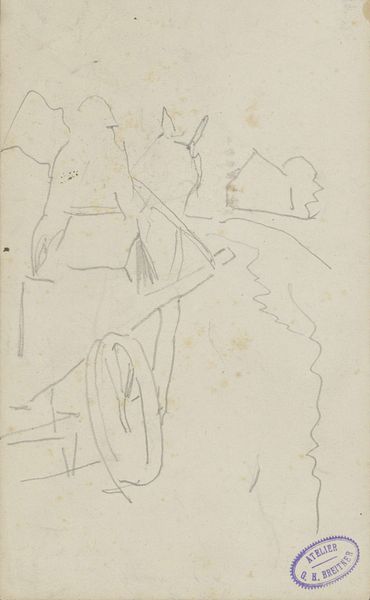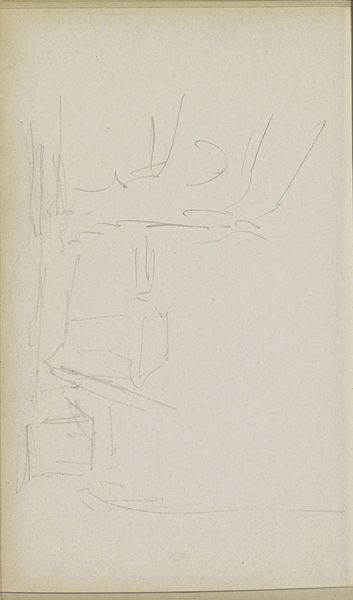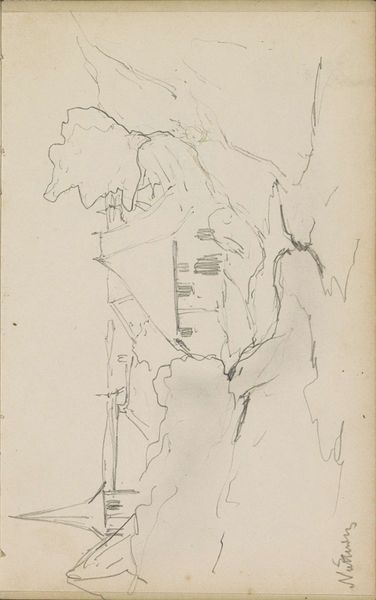
drawing, pencil
#
drawing
#
pencil sketch
#
landscape
#
form
#
pencil
#
line
#
realism
Copyright: Rijks Museum: Open Domain
Curator: This sketch, known simply as "Landschap," meaning "Landscape," is attributed to Adrianus Eversen, dating sometime between 1828 and 1897. It's rendered in pencil on paper. What strikes you about it initially? Editor: It's wonderfully ethereal. Almost like a memory of a landscape rather than a concrete depiction. The sparse lines give it a fleeting, dreamlike quality. What's the story behind Eversen’s engagement with landscapes during this period? Curator: Eversen, while best known for his cityscapes, produced landscapes, though these are rarer. During this period, landscape art moved beyond pure documentation, functioning as social and cultural representations of changing views on industrialization, urbanization, and new technologies. The art market's embrace of such picturesque scenes drove their production as well. Editor: It’s interesting how even in its unfinished state, there’s still a recognizable symbol. Those shapes, though loosely drawn, evoke a sense of nature’s unbridled energy and hint towards Romanticism with their evocation of wilder countryside – how does Eversen use lines in this piece to evoke a specific meaning for the viewer? Curator: Well, Eversen's economical use of lines highlights his focus on form and structure. His skill as a painter translated into draftsmanship where he was adept at reducing complicated buildings and scenes into their simplest terms for documentation purposes. Editor: Looking at it closely, I also read into this sketch more profound symbols about man's connection to land, or even just pure human emotion projected onto environment – something particularly evident given his choice of nature against technology we mentioned earlier which can really give way toward interpretation from psychological perspectives given viewers will bring to scene certain expectations around familiarity that comes together giving the image life even through minimalistic style, thus making meaning both fluid as solid all because viewers have their association set firmly on idea about "landscape" from social standpoint perhaps based even purely personal accounts they experienced themselves previously setting template whereby emotional impact happens quickly here... Curator: That's an insightful reading. The incompleteness allows space for viewers’ own memories and emotional resonances to complete the picture. The open style mirrors shifts that had occurred where traditional landscapes shifted with urban industrialism so the viewers engage by bringing together personal connection based against this new emerging world order within wider historical background as reflection what individual stands inside evolving social narrative - really amazing isn't!? Editor: Absolutely. Eversen’s light touch, far from being a weakness, becomes a strength, drawing us into a collaborative act of imagination. I now look at art differently based both society & emotions interplay given form and media shape stories!
Comments
No comments
Be the first to comment and join the conversation on the ultimate creative platform.
